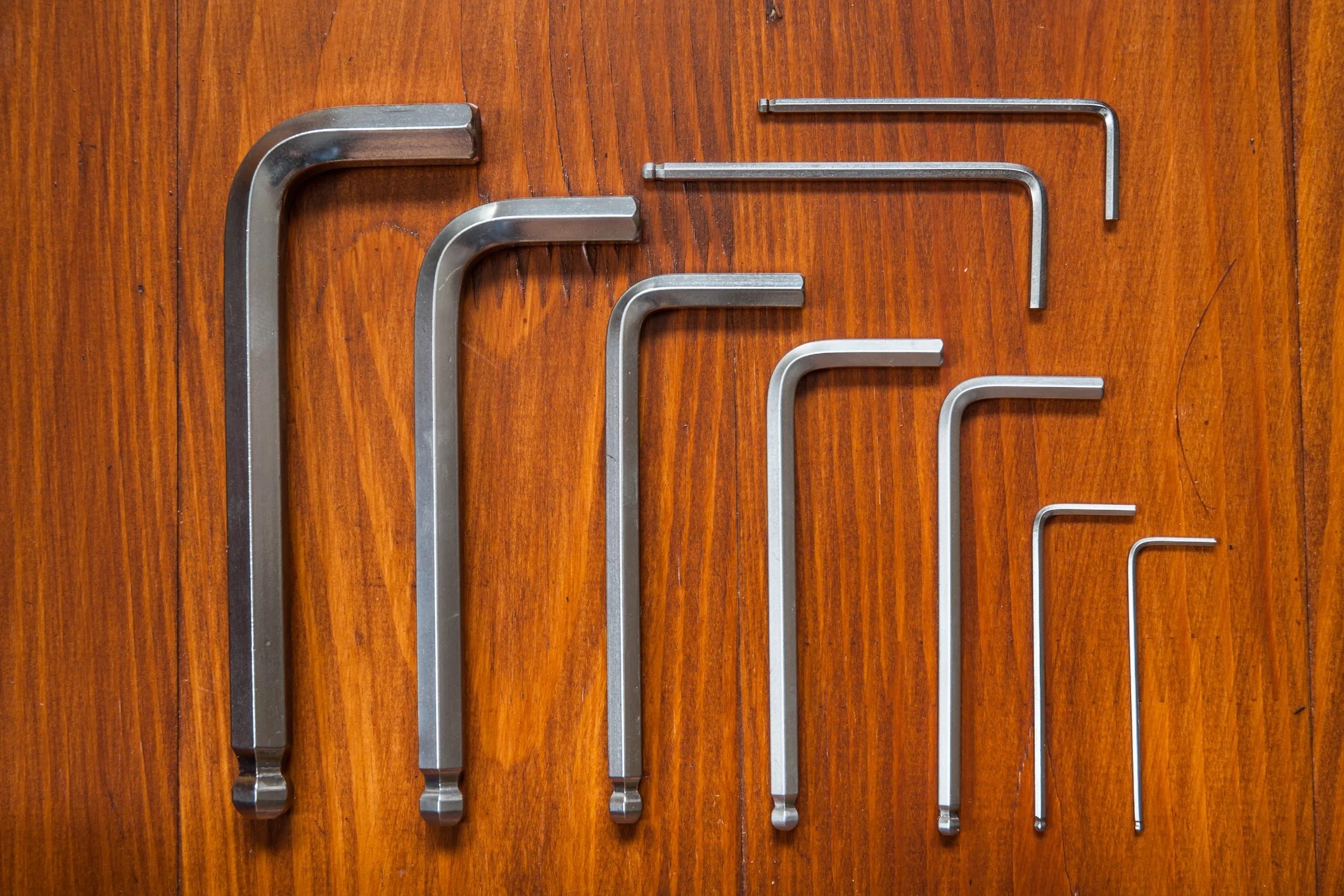Hex Key vs. Allen Wrench: Are They the Same?
Ever found yourself staring at a toolbox, wondering about the difference between a hex key and an Allen wrench? You're not alone. These small, L-shaped tools are ubiquitous, found in everything from furniture assembly to bicycle repair, but their names often cause confusion. Let's dive into the world of hex keys and Allen wrenches and clear up the mystery once and for all.
So, is a hex key the same as an Allen wrench? The short answer is yes. "Allen wrench" is a genericized trademark, much like "Kleenex" for tissues. While "Allen" originally referred to a specific brand, it has become a common term for any hexagonal wrench. A hex key, short for hexagon key, describes the tool's six-sided shape, which perfectly fits into hexagonal screw sockets. Therefore, the terms are interchangeable in everyday use.
The history of the hex key traces back to the early 20th century when the Allen Manufacturing Company patented their design. Initially, these wrenches were primarily used in industrial settings. However, their versatility soon led to widespread adoption in various fields, from automotive mechanics to DIY projects around the house. The simple yet effective design allows for high torque application in tight spaces, making them indispensable for countless applications.
The key to their effectiveness lies in the precise fit between the wrench and the screw socket. This snug fit allows for maximum torque transfer, minimizing the risk of stripping the screw head. The L-shape provides leverage and accessibility, especially in confined areas. Think about assembling furniture – often, screws are located in recessed areas, making traditional wrenches impractical. Hex keys provide the perfect solution.
Despite their simplicity, a few common issues can arise when using hex keys. Stripped screw heads are a frequent frustration, usually caused by using the wrong size key or applying excessive force. Another problem is rounding off the corners of the hex key itself, rendering it useless. Choosing high-quality tools and using the correct technique can mitigate these problems.
One of the significant benefits of hex keys is their compact size. They easily fit into small toolboxes or even pockets, making them ideal for carrying around. Their versatility is another advantage – a single set of hex keys can be used for a wide range of applications, from tightening screws on electronics to adjusting bicycle components.
A second benefit is their affordability. Hex key sets are relatively inexpensive, especially considering their wide range of uses. This makes them an accessible tool for everyone, from the occasional DIYer to the professional mechanic.
Finally, hex keys require minimal maintenance. They are typically made from durable materials that can withstand regular use. Simply keeping them clean and dry will ensure they last for years.
Before using a hex key, ensure you've selected the correct size. Insert the key fully into the screw socket to prevent stripping. Apply steady, even pressure while turning the key. Avoid jerking or twisting motions, which can damage both the screw and the wrench.
Advantages and Disadvantages of Hex Keys
| Advantages | Disadvantages |
|---|---|
| Compact Size | Can strip screws if used incorrectly |
| Versatility | Keys can be rounded off with overuse |
| Affordability | Limited leverage for very tight screws |
Best Practices:
1. Use the correct size: This is crucial to prevent stripping screws or rounding off the hex key.
2. Apply steady pressure: Avoid jerky or twisting motions.
3. Keep keys clean: Remove any dirt or debris that could interfere with the fit.
4. Store properly: Keep your hex keys organized to prevent loss or damage.
5. Invest in quality: Higher quality hex keys are made from more durable materials and will last longer.
Frequently Asked Questions:
1. Are hex keys and Allen wrenches the same? Yes.
2. What are hex keys used for? They are used to tighten and loosen hexagonal socket screws.
3. What sizes do hex keys come in? They are available in a wide range of metric and imperial sizes.
4. How do I choose the right size hex key? Match the key size to the screw socket size.
5. What should I do if I strip a screw? Try using a screw extractor.
6. Are there different types of hex keys? Yes, including L-shaped, T-shaped, and folding hex keys.
7. What are hex keys made of? Commonly steel or hardened steel alloys.
8. Where can I buy hex keys? Hardware stores, online retailers.
Tips and Tricks:
For extra grip on a stubborn screw, try using a piece of tape or sandpaper between the hex key and the screw head.
In conclusion, the hex key, also known as the Allen wrench, is an essential tool for anyone who works with machinery, furniture, bicycles, or numerous other items requiring assembly or repair. Understanding the subtle differences in terminology and following best practices for their use will ensure you get the most out of these versatile tools. Their compact size, affordability, and adaptability make them an invaluable addition to any toolbox, whether you’re a seasoned professional or a weekend warrior tackling a DIY project. Investing in a good quality set and using them correctly will save you time, frustration, and potentially stripped screws in the long run. So, the next time you reach for that L-shaped tool, remember the power and versatility packed into this small but mighty implement.
The soundtrack of love how tiktok is shaping music trends
Unleash your inner artist drawing inspiration from stitch
Unlocking ap physics c mechanics your guide to mcq mastery














